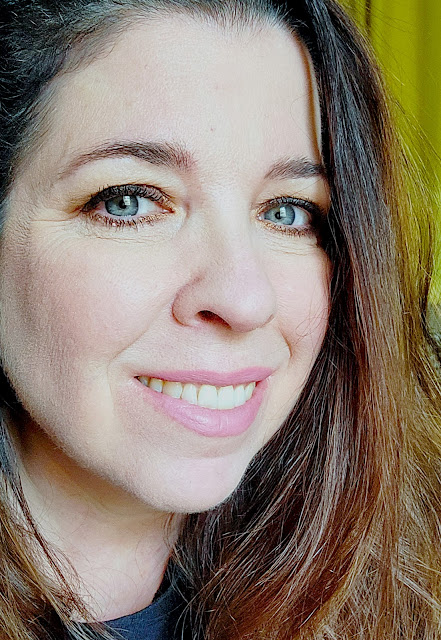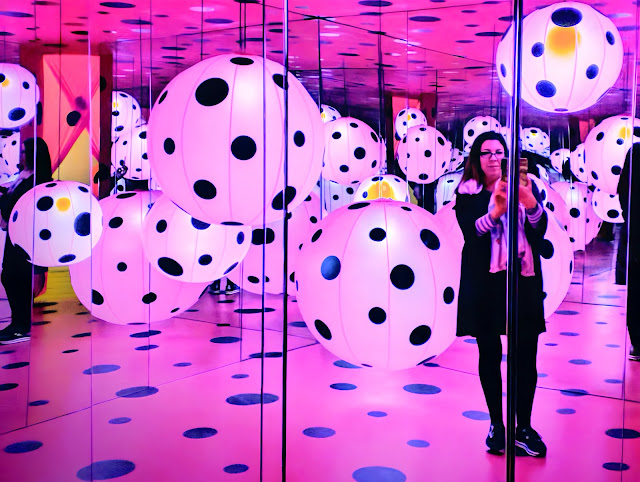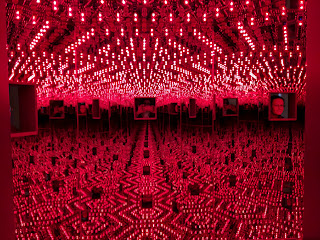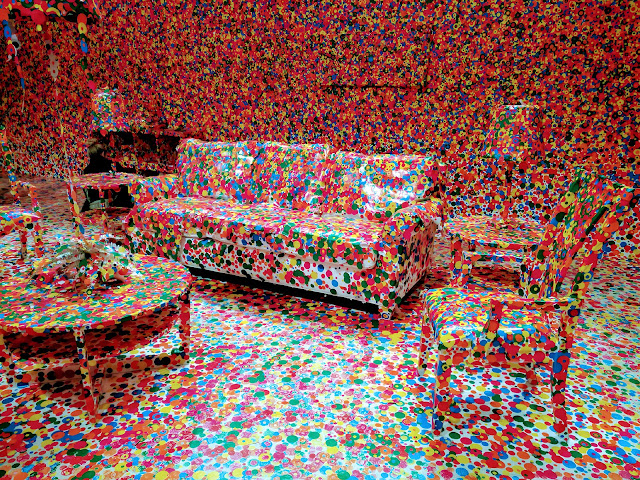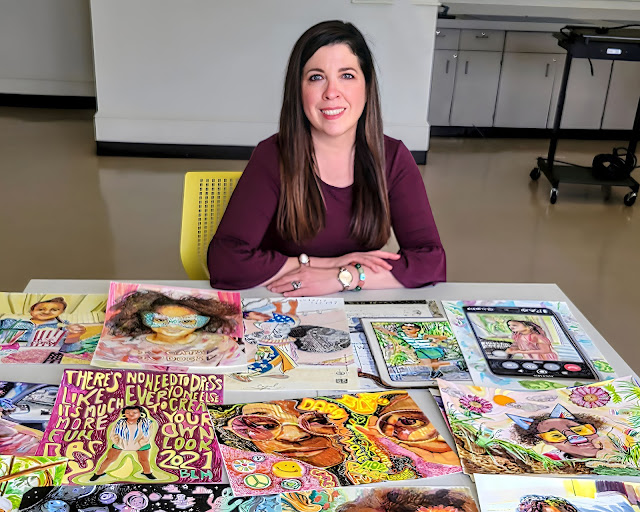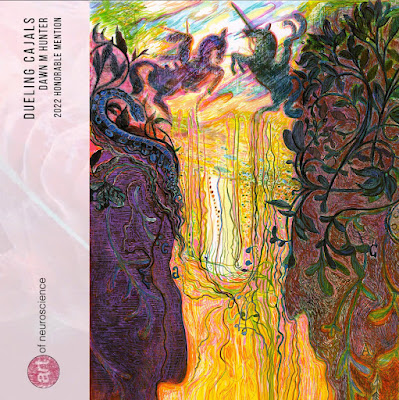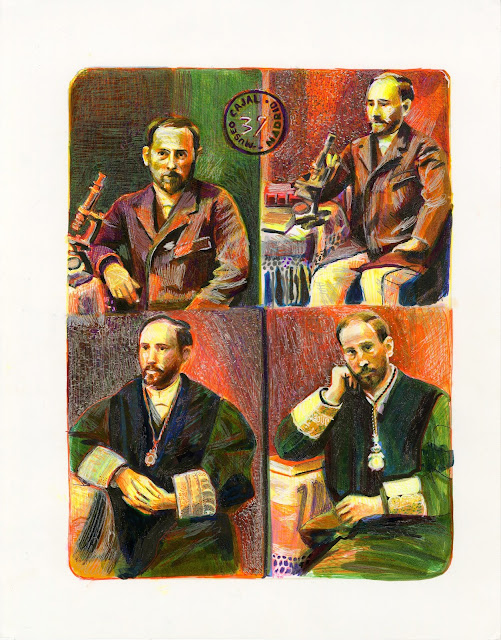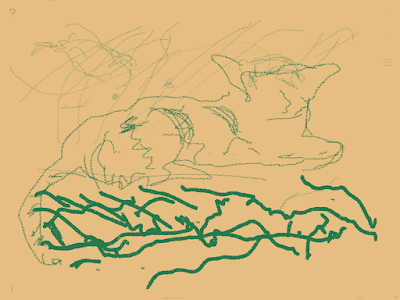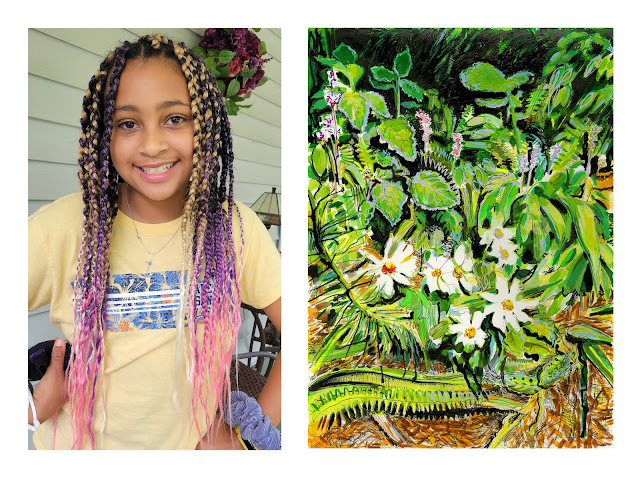You can copyright your PowerPoint or professional presentations and probably should. How? What copyright registration format? This blog post examines the definition of plagiarism and the impact of internet access; plus lists the instructions on how to register your PowerPoint or professional presentation under the Motion Picture/Audio and Visual work through the Copyright Office of the United States Government.
What is plagiarism?
"Plagiarius" is the Latin root for plagiarism, and it means kidnapper or someone who steals children by capturing them in a net or a plaga. The word arose from ancient human behavior. Internet access has been identified as a leading "culprit" in the rise of plagiarism, so the metaphor for contemporary human behavior is not lost in its linguistic origins. ORI (Office of Research Integrity) has defined plagiarism as: "Appropriating someone else's idea (e.g., an explanation, a theory, a conclusion, a hypothesis, a metaphor) in whole or in part, or with superficial modifications without giving credit to its originator."
Strictly speaking, PowerPoints and professional presentations are automatically copyrighted when they are created; however, you can register your presentation with the Copyright Office of your nation. Presenting a PowerPoint at a professional meeting is considered a form of publication. Registering your PowerPoint presentation will ensure that you can take legal recourse if the content is plagiarized, i.e., original concepts, images, and scripted content appear, without proper citation, in someone else's work: presentations, published articles, books, blogs, websites, etc.
Comprised of Taylor & Francis, Routledge, CRC Press, F1000 Research, and Dovepress, top publishers Taylor & Francis has an entire web page devoted to various plagiarism topics, such as types of plagiarism, detecting and avoiding it. They have provided a precise definition for writers in their online content Author Services, defining the matter as the following: "For Taylor & Francis journals, this applies to data, images, words or ideas taken from any materials in electronic or print formats without sufficient attribution. This can include:
- abstracts,
- seminar presentations,
- laboratory reports,
- thesis or dissertation,
- research proposals,
- computer programs,
- online posts,
- grey literature,
- unpublished or published manuscripts.
The use of any such material either directly or indirectly should be properly acknowledged in all instances. You should always cite your source (please see 'How to avoid plagiarism' below)."
Plagiarism is common in all professions and occurs at all professional levels. Statistically, men tend to plagiarize more than women. Biological sciences in academia have the highest academic misconduct rate, which includes lifting content from others, falsely reporting data, and fabricating information or outcomes of experiments.
In the 2013 paper, Males Are Overrepresented among Life Science Researchers Committing Scientific Misconduct, Dr. Ferric C. Fang, Dr. Joan W. Bennett, and Dr. Arturo Casadevall examine retracted articles indexed by PubMed written by biomedical and life science authors. Their study explored plagiarism, fraud (10-fold increase since 1975), duplicate publication, research error, journal error, other reasons (e.g., unresolved authorship conflict), and unknown reasons. Their study found that most retracted articles were the result of misconduct.

In the paper Factors influencing plagiarism in higher education: A comparison of German and Slovene students, Eva Jerad et al. concluded that the field is level among both genders and nationalities. They determined through their study which included 485 participants that digital technology and access to content through the internet was the main driving force. In their paper, they cited three published definitions of plagiarism: "Perrin, Larkham, and Culwin define plagiarism as the use of an author's words, ideas, reflections and thoughts without proper acknowledgment of the author. Koul et al. define plagiarism as a form of cheating and theft since in cases of plagiarism, one person takes credit for another person's intellectual work. According to Fishman, 'Plagiarism occurs when someone: 1) uses words, ideas, or work products; 2) attributable to another identifiable person or source; 3) without attributing the work to the source from which it was obtained; 4) in a situation in which there is a legitimate expectation of original authorship; 5) in order to obtain some benefit, credit, or gain which need not be monetary.'"
We have examined several definitions of plagiarism from individuals and organizations within this post. Despite the form of original content format, e.g. PowerPoint, and the manifestation of the plagiarized content, e.g., book chapter, the consensus is if the content is an "intellectual work product" of another without proper attribution to the origin (whether written, spoken, performed or visual), it is plagiarism. While full of ideas, your PowerPoint is not simply "an idea." It manifests the development of ideas and is a completed work in the Audio and Visual format.
Contemporary audiences attending presentations are equipped with smartphone cameras, linked to the internet, and are sometimes actively engaged with social media platforms like Twitter. During or after a presentation, the content of professional PowerPoint presentations aren't confined to a conference or symposium audience. Novel and innovative ideas, images of original research, or unique conceptual content can be instantaneously shared, liked, and re-shared with thousands. This rapid-fire sharing can occur with or without the author's knowledge or consent and thus create research vulnerabilities. However, there are perks, too. Engagement in sharing content immediately with a broad and diverse audience can also be advantageous. Meaningful research connections can be made. Therefore, the potential for unexpected input through new collaborative relationships can foster a robust research outcome.

Above: Images from my presentation, Content and Form: Cajal's Unique Visual Language, September 29, 2017, at the National Congress of Spanish Neuroscience (SENC 2017.) Neuroscientist Dr. Carmen Agustin, Tweeted about my presentation during my talk. In her Tweets, she demonstrated professional etiquette: documented the event, showed the timeline of the ideas in the PowerPoint, and made clear that the ideas were developed from my research. Tweet thread translation, left Tweet: Dawn Hunter comparing the works of Golgi and Cajal: "Cajal draws what he sees, Golgi tries to fit what he sees into his idea." Top right Tweet: "Cajal drew with continuous lines; surely due to the influence of his maternal grandfather, a weaver." Middle right Tweet, where I present my theory "Dürer's influence on Cajal's photos." Bottom right Tweet: Dawn Hunter first recreated Cajal's drawings [through observing the primary source]; then, she has created her own works based on them. Photos and Tweets courtesy of Dr. Mari Carmen Agustin Pavon.

Above: My presentation at SENC 2017 Content and Form: Cajal’s Unique and Inventive Visual Language, September 29, 2017, Alicante, Spain. Photo courtesy of Fernando De Castro Soubriet.
Not all passive observers possess integrity, and some can be opportunistic with the content of your work. Other times, because they viewed it on the internet, people will erroneously mistake your academic scholarship as belonging to the public domain. That is unfortunate, but it is their responsibility to clarify the origin of content before using it. Therefore, taking steps to register for your presentation is a must. It will protect your research and define the source of unique concepts and content if your research makes its way into someone else's work without a proper citation.
Information and Steps to Copyright your presentation:
What does the copyright of your PowerPoint cover? Your content: your expression of ideas (organization, sequence, and context), scripted text that you have written that appears visually on the slide, scripted text you wrote but spoke during the presentation as it appears in your PowerPoint slide notes, and any original figures (jpegs., graphs, tables, etc.) you created for the presentation.
What your PowerPoint or presentation copyright will not cover? Photographs that are copyrighted by someone else or an organization, images that are in the public domain, or scripted text written by or copyrighted by another person, quotes or scripted text from the public domain, and figures where others hold the copyright or are from the public domain (jpegs., graphs, tables, etc.)
How much does it cost? $65.00
Above: Slide from from my presentation, Content and Form: Cajal's Unique Visual Language, September 29, 2017 at the National Congress of Spanish Neuroscience (SENC 2017.) Red arrows indicate what will not be covered and the green arrows indicate what will be covered.
Steps to follow:
Below are the steps to follow in order to copyright register a single author PowerPoint or professional presentation in the United States. There are a few extra steps that need to be taken for multiple authors, but that is not covered in this post:
- Visit https://copyright.gov/registration/. Select the type of work that you wish to register: literary works, visual arts, other digital content, motion pictures, or photographs. If you are registering a PowerPoint, select Motion Pictures. You will be prompted to login in or create an ECO ID account.
- Check standard application and start registration for one work. (You can register unpublished works in groups or batches, but that is not going to be covered in this post.)
- You will then be taken to the online form. From the drop down menu select the Type of Work, choose Motion Picture/Audio and Visual work and confirm that it best describes what you are trying to register.

- You will proceed to the title sections. From the drop down menu select Title of Work Being Registered and Title of this Work box below, list the title of the work.
- For Publication Completion, check yes for the question if it has been publish before. For example, if you have presented it at a professional meeting or distributed it electronically or publicly on the web. If it is unpublished, check or no. If it has been published, there will be prompts to complete indicating which country and the date. It also has a section to fill in if there is a pre-existing registration number in the event your work was registered outside in a foreign country prior to the United States. If it was presented outside of the United States, but not registered outside of the United States, leave that section blank.
- Check "Add me" for the following categories: List Authors, Claimant, Limitation of Claim, Rights & Permissions, Correspondent, and Mail Certificate. Please note, under Limitation of Claim in addition to adding yourself, you will need to indicate what content is excluded from the registration, e.g., figures or text you have not authored.
- Special Handling can be left blank. However if you are pursuing legal litigation and have a pending court case or other dispute, customs matters, or a contract or publishing deadline, check the appropriate category and explain the reason in the space provided. Keep in mind that Special Handing will increase the cost of your claim by $760.00, thus the total application fee could be as much as $825.00.
- Once the form is filled out you will certify that everything you have submitted is true. You will have the opportunity to review and correct your application. When you complete your review and corrections as needed, add your application to the cart and proceed to check out. You will be taken off site to submit your $65.00 non-refundable payment.

- Once your payment is completed, you will then be able to submit the work that you want to register for review. Select the Submit Work tab and follow the instructions. You can submit your PowerPoint or professional presentation electronically (recommended) or print it and mail in a hard copy of it. If you submit your work electronically, take time to review the specifications for file size restrictions and recommended files. For any type of professional presentation, I recommend a PDF. If you select that you wish to mail in a hard copy of the for review, you will need to select "generate a label." A label will be generated that you must attach to the work you mail directly to the United States Copyright Office.
Best of luck registering your work. Stay tuned - please visit this blog again in the future. I will be posting about how to copyright individual artworks, batches of artworks, photographs, blogs, websites, literary works and more!
Bibliography:
Singer: Hank Williams, Song Writer: Hank Williams, Your, Cheatin' Heart, A-side Kaw-liga, MGM K 11416-B, 1952. Producer: Fred Rose.
Fang FC, Bennett JW, Casadevall A. Males are overrepresented among life science researchers committing scientific misconduct. mBio. 2013 Jan 22;4(1):e00640-12. doi: 10.1128/mBio.00640-12. PMID: 23341553; PMCID: PMC3551552.
Jereb, E., Perc, M., Lämmlein, B., Jerebic, J., Urh, M., Podbregar, I., & Šprajc, P. (2018). Factors influencing plagiarism in higher education: A comparison of German and Slovene students. PloS one, 13(8), e0202252. https://doi.org/10.1371/journal.pone.020225

